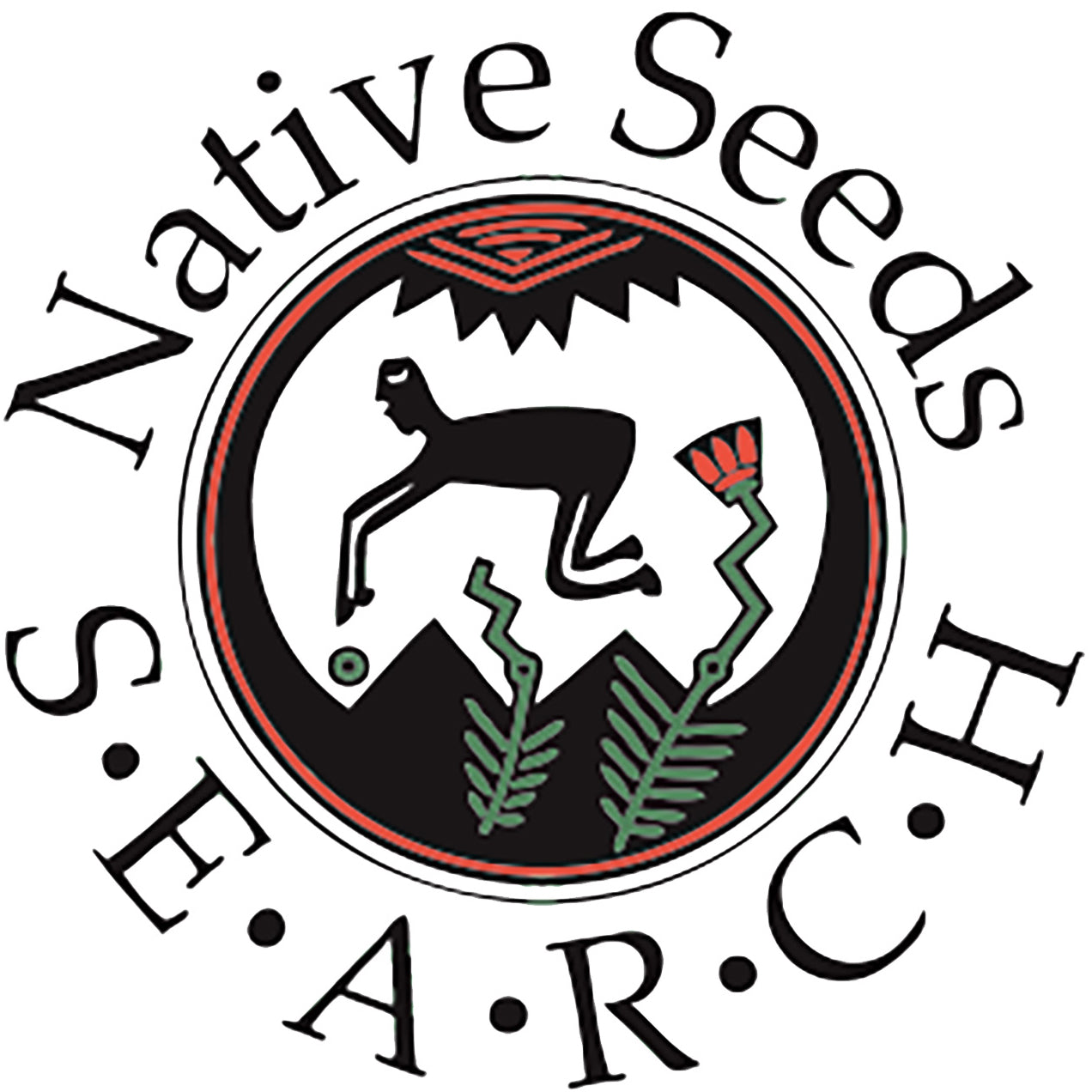
In our warming world, drought-adapted food plants are more important than ever. “Adopt-A-Crop allows us to bring awareness to the importance of saving seeds, growing what works best in our region, and sharing this knowledge, and seeds, with everyone. Making sure this precious biodiversity is around for future generations, it’s truly a community effort,” - NS/S Executive Director Joy Hought.
Each year numerous accessions (seed varieties) from the Seed Bank Collection are gown out with help from partner growers, and at the Native Seeds/SEARCH Conservation Center garden in Tucson, AZ.
The number of accessions varies depending upon a variety of factors; the number available seeds, the pollination needs, available staff, and needs of the Conservation program. This year, we have selected 5 of these accessions to highlight during our Adopt-A-Crop campaign. The campaign allows NS/S supporters to join in the shared stewardship of these seeds. All supporters will receive a report of the grow-out at the end of the harvest and seed processing cycle.
Yerba Anis

This lovely and multifaceted little plant is known by many names: Yerba Anis, Mexican Marigold, Mint Marigold, Mexican Tarragon, Tagetes lucida. A wild perennial, it is native to Mexico and is used there for making a healing tea. The leaves are used in the kitchen as a tarragon substitute, and its flavor is often described as anise- or licorice-like. The flowers are used in dye, and it has many uses in the garden. The flowers are also used traditionally as offerings in Day of the Dead celebrations. Our accession comes from Nabogame, Chihuahua where it was collected in 1986. This is the first time this seed has been available since 2010.
Yuma Red Okra

This variety is new to NS/S and we're excited to be able to preserve it and grow seed to share! A generous NS/S member and volunteer received these seeds in 1980 from a family who had grown them in Yuma, AZ for many years. They've since thrived every year when grown in varied southwestern locales. Because of its long adaptation to the harsh summer conditions in Yuma at 141 feet elevation, and its versatility in adapting to climates from Sonoita to Tucson to Carson City Nevada at almost 5000 feet, this plant is a good fit for the NS/S collection. This is a beautiful and highly productive plant with deep red stalks, spectacular flowers, and tasty pods with a low mucilage (slime) factor.
Melon Mexicano

This lovely little cantaloupe comes from Redford, TX, and has been very popular with low desert gardeners. It is associated with the Jumano people of the Redford region, and the farmer who donated the seed to NS/S said "the old timers used to plant it.” We are thrilled to be working with Ochoa Community School on this grow out in their school garden in South Tucson. Teachers there use garden projects to help motivate kids to practice their math skills and more. This is a win-win project: the kids will learn gardening and seed saving in the tastiest way possible - by growing and eating sweet melons, and saving seed for the NS/S community.
Yoeme Blue Corn

Blue corn adapted to low desert environments is very uncommon. This rare variety of blue flour corn is one of only four accessions in the NS/S collection. Flour corn is composed largely of soft starch and is ideal for fine cornmeal for bread, piki, and atole. It is also used as hominy for tamales and tortillas and the whole kernels are used for posole, chicos (roasted green corn that
is then dried), parched corn (dried and roasted whole corn kernels) and elotes. Flour corn can also be eaten in its immature or “milk” stage when steamed or BBQ’d. While it is sweeter and more tender than flint types in this stage, it is not as sweet as sweet corn types. To learn more about different types of corn and their uses, check out our Types of Corn blog post.
This accession of Yoeme Blue Corn was collected on the Salt River Reservation and has connections to the Pascua Yaqui community. The short plants produce beautiful small ears with kernels ranging from steel blue to dark purple. This variety is in very low supply, support Adopt-A-Crop today and help make it available more widely once again.
Teosinte

Teosinte is the ancient wild plant from which modern corn has developed, in some combination of mutation and domestication that scientists do not yet fully understand. It is a grass like plant with extremely hard, triangular seeds.
Farmers in Mexico traditionally let teosinte grow near their cornfields to help keep their corn strong. As with many wild relatives of domesticated crops, teosinte's ancestral genetics harbor traits that can contribute to the disease resistance and vitality of corn. While it is not generally eaten on its own, it is important to preserve wild relatives like this as an insurance policy for food production today and in the future. If successful, this will be our first regeneration of seed that came to us from Nabogame, Chihuahua in 1984. Curious about growing teosinte? Check out our Growing Teosinte blog.
How to Participate
The successful grow-out of these plants is critical to ensuring future quantities of seed, and in turn food, are available to backyard gardeners, community gardens, small-scale farmers, and Native American growers preserving traditional farming methods.
Please choose one (or more) of these rare seeds to adopt this year - each is in very low supply. Your donation supports the 2019 growing season and ensures these and other heritage seeds continue to be available to farmers and gardeners.
Thank you for playing an essential role in protecting agricultural biodiversity. You are a critical part of this community! Let’s keep making a difference.

